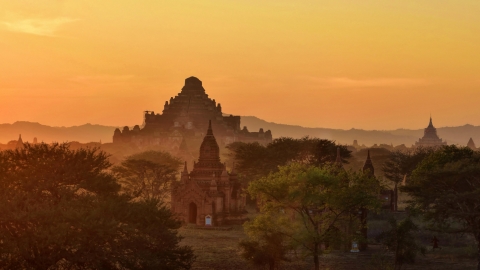The three ancient pagodas that photographer Le Bich visited, including Vo Vi Pagoda, Tram Pagoda and Tram Gian Pagoda, are located in Chuong My District, Hanoi, about 20 km from the city center. According to him, visitors just need to follow Nguyen Trai Street to Ha Dong, then follow National Highway 6 towards Hoa Binh, pass Yen Nghia bus station and Mai Linh bridge to Bien Giang Ward. When you are about 1 km from the sign of the end of the inner city area, look to the right, you will see the sign of Hanoi University of Physical Education and Sports and turn in. Go about 5 km further, you will see Tram mountain range (also known as Tu Tram Son) in Phung Chau Commune, Chuong My District, Hanoi. For convenience, photographer Le Bich chose to visit Vo Vi Pagoda first.
Vo Vi Pagoda
Vo Vi Pagoda is a small pagoda about 10 meters wide.2Located on the top of Vo Vi mountain near Tram mountain range. As soon as you pass through the temple gate engraved with the words "Vo Vi Tu", you will feel a quiet atmosphere completely different from the famous big temples. Vo Vi temple does not have incense smoke or crowded people, but only a very peaceful quiet and purity.
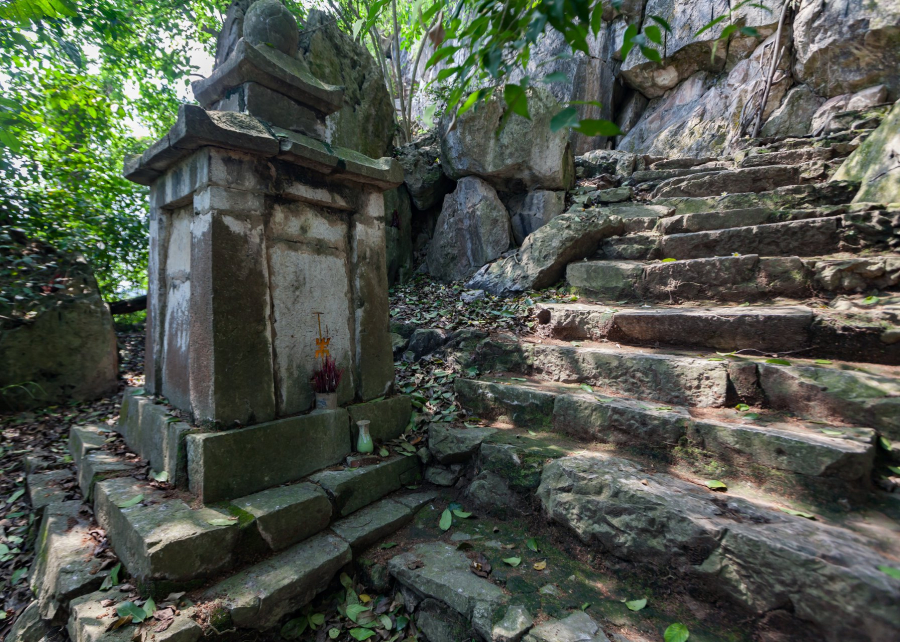
Passing through the temple gate engraved with the words "Vo Vi Tu" you will see the steps leading up to the temple. (Source: Le Bich)
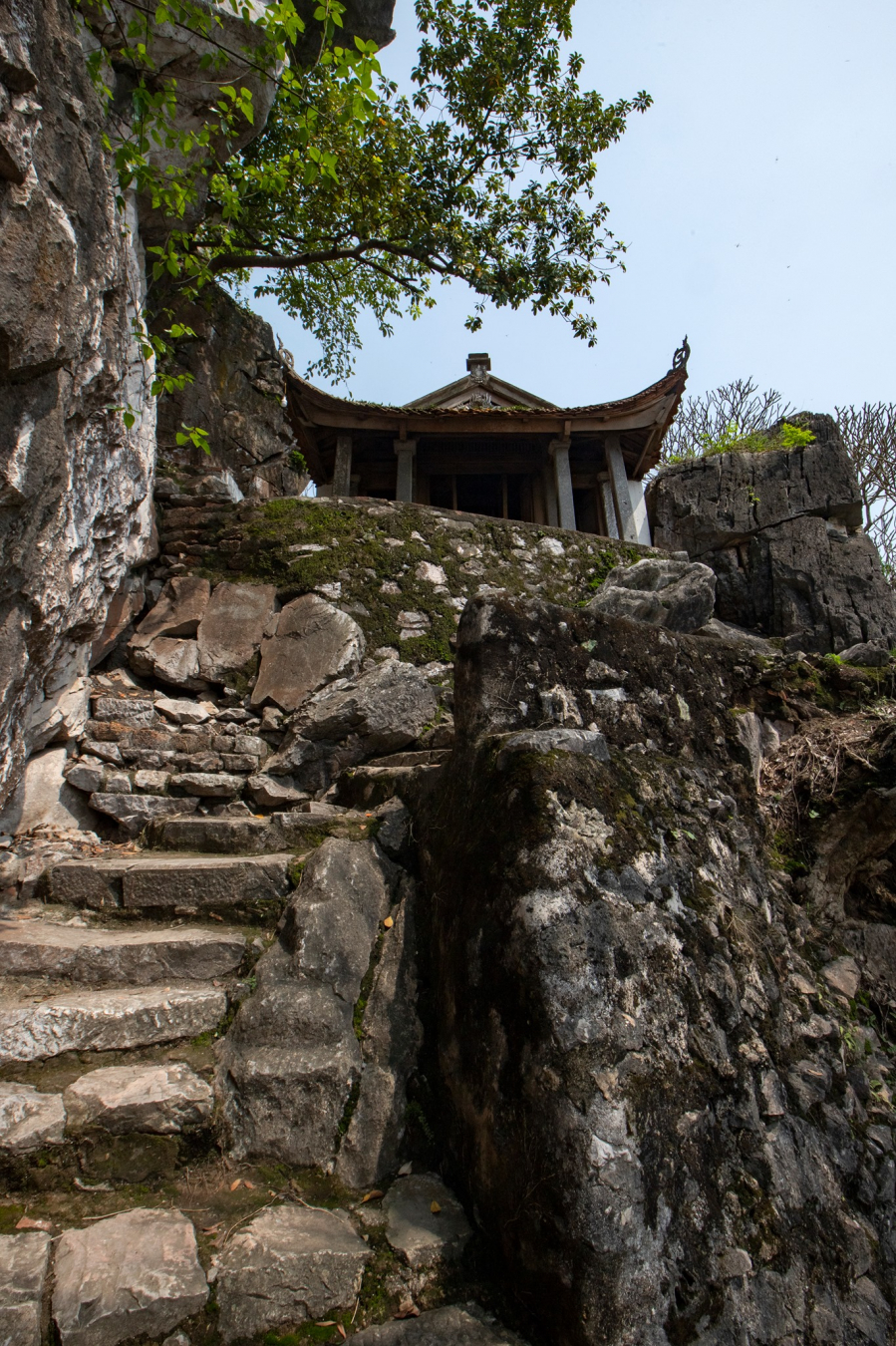
Vo Vi Pagoda is located on the top of Vo Vi mountain. (Source: Le Bich)
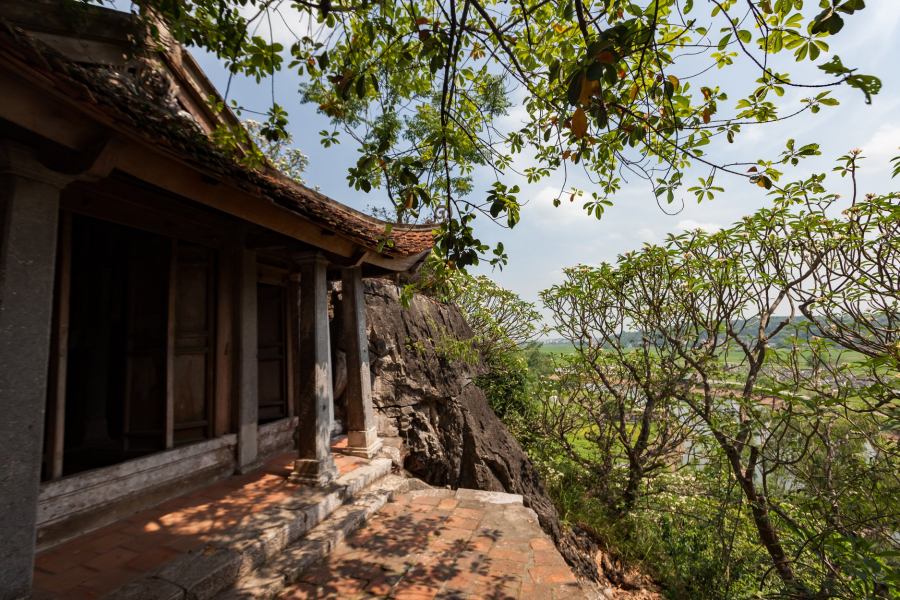
Standing on the pagoda, you can see the green natural scenery below the foot of the mountain. (Source: Le Bich)
According to legend, Vo Vi Pagoda was built in the 10th century during the Dinh Dynasty, when a leader of the 12 warlords came here to hide. During the Tien Le Dynasty, the pagoda was located at the foot of the mountain and was called "Phuc Tru Tu". During the Tran Dynasty, the pagoda was renamed "Trai Tinh Tu". During the Hau Le Dynasty, in the 6th year of the Hong Thuan era (1514), the pagoda took the name "Vo Vi Tu" as it is now. The name "Vo Vi" is also the Vo Vi doctrine of Lao Tzu, advising people to follow nature.
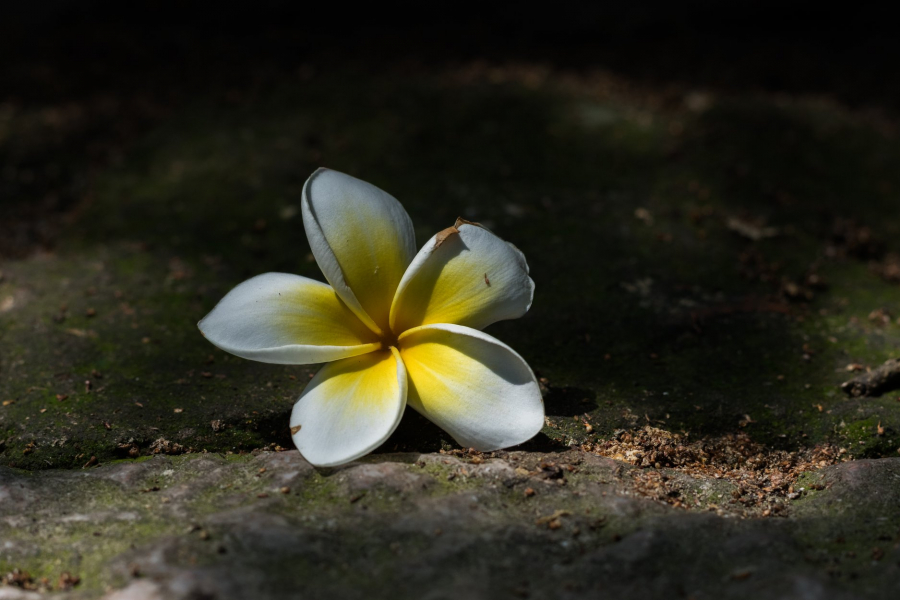
Flowers fall at the Buddha's door. (Source: Le Bich)
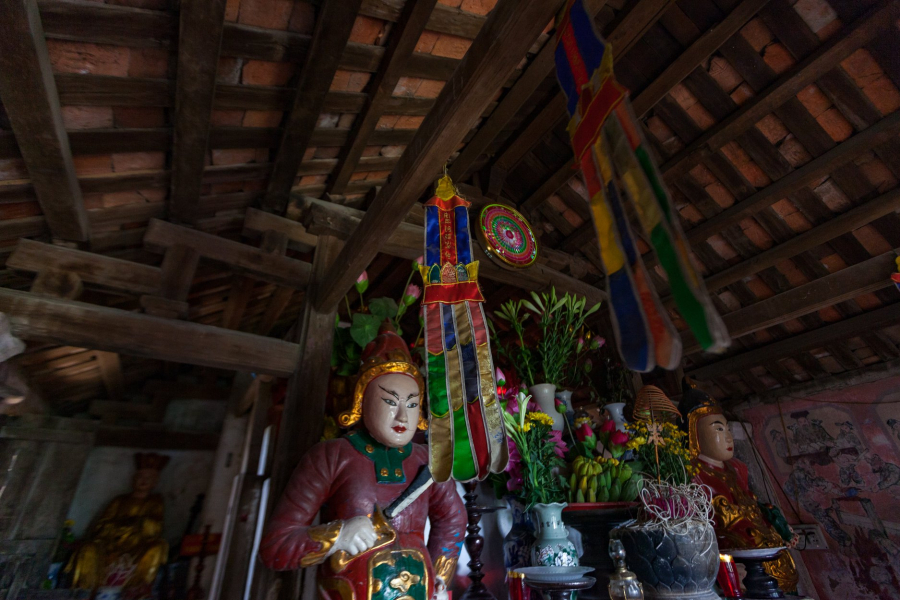
The temple has no monks but is looked after by an old Buddhist living at the foot of the mountain. (Source: Le Bich)
Although it has existed for many centuries and gone through many changes of the times, the pagoda still retains its simple, rustic features with steles of great historical and artistic value such as the stone stele engraved with the poem "Trùng pháng Vô Vi Tự" (Revisiting Vô Vi Pagoda) by General Trần Văn Tăng. The pagoda is also famous for its bronze bell cast in 1814 during the Nguyen Dynasty and the Nghinh Phong pavilion where visitors can admire the panoramic view of the scenic Tram Mountain not far away and the prosperous countryside at the foot of the mountain.
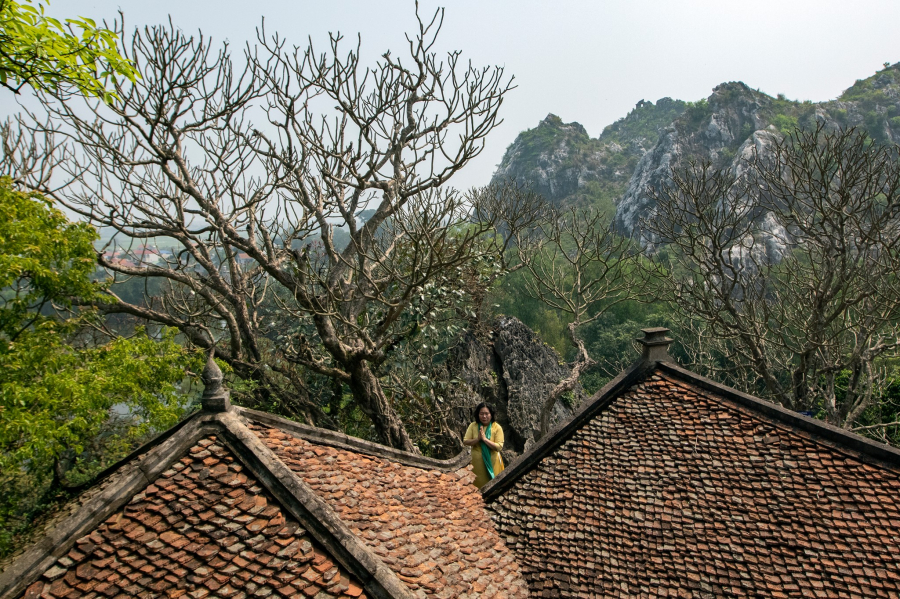
The Nghinh Phong Tower in the temple. (Source: Le Bich)

To climb to the top, visitors must squeeze through crevices in the rocks. (Source: Le Bich)
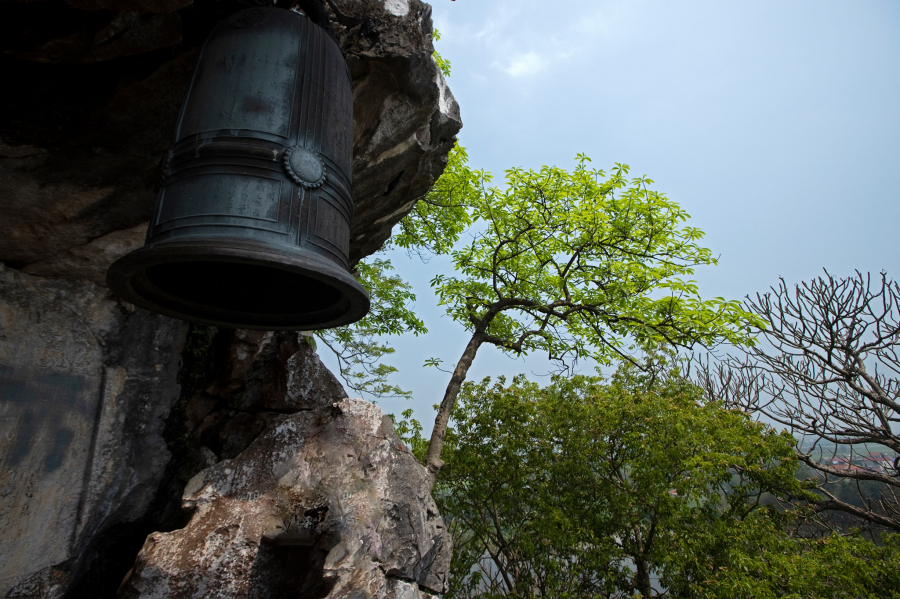
Bronze bell cast in 1814. (Source: Le Bich)
Tram Pagoda
After leaving Vo Vi Pagoda, photographer Le Bich moved to Tram Pagoda about 500 meters away. Tram Pagoda is the main pagoda in a complex of many pagodas located on Tram Mountain range. The pagoda was built in the 16th century (1515) initiated by General Tran Van Tang. It has a small area but a large yard with many ancient trees and has the "back to the mountain, facing the water" position - its back leaning on Tram Mountain range and its face facing Day River. Tram Pagoda also has an ancient, solemn beauty with architecture imbued with the typical spiritual culture of the Northern Delta region. With many tree branches and leaves on the mountain spreading shade, the space in the pagoda is always cool and airy, creating the feeling that the pagoda and the mountain are an inseparable unified block.

Tram Mountain is a limestone mountain made up of nine small peaks, standing out among the green rice fields with extremely poetic and magnificent scenery. (Source: Le Bich)
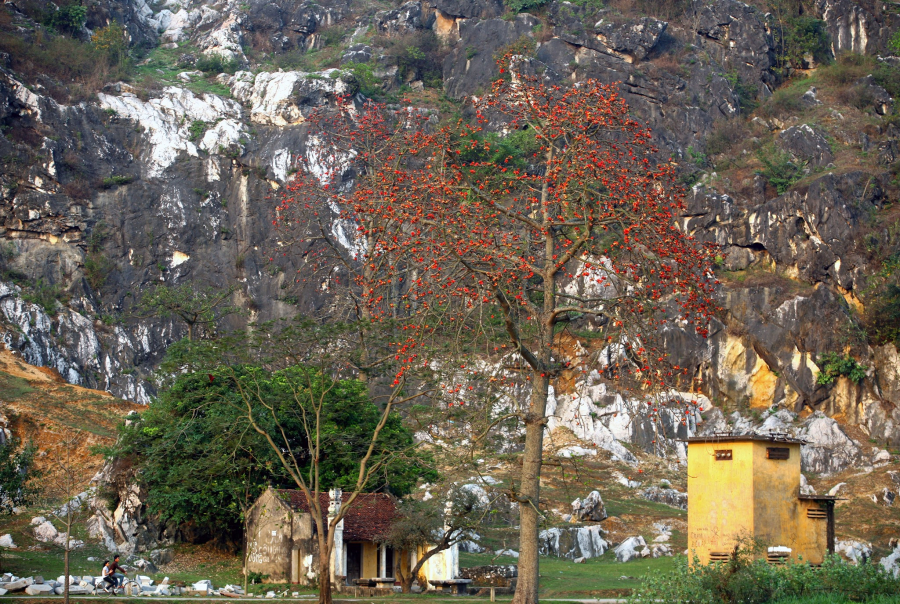
Bright red cotton tree on the way to Tram Pagoda. (Source: Le Bich)

Su flowers on Tram mountain. (Source: Le Bich)

The road to Tram Pagoda. (Source: Le Bich)
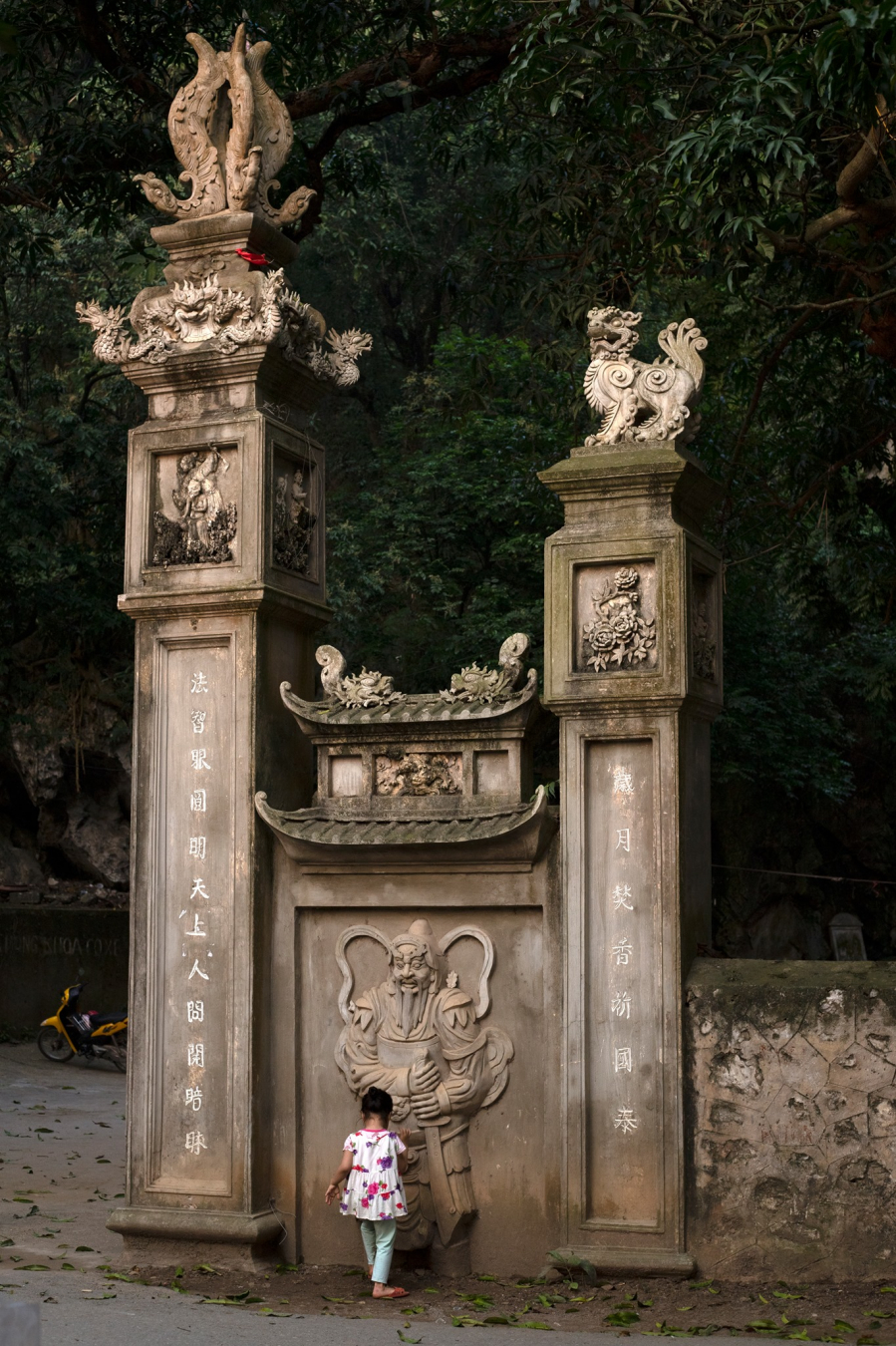
Tram Pagoda is considered one of the four sacred pagodas among the "four great scenic spots of the Doai region". (Source: Le Bich)
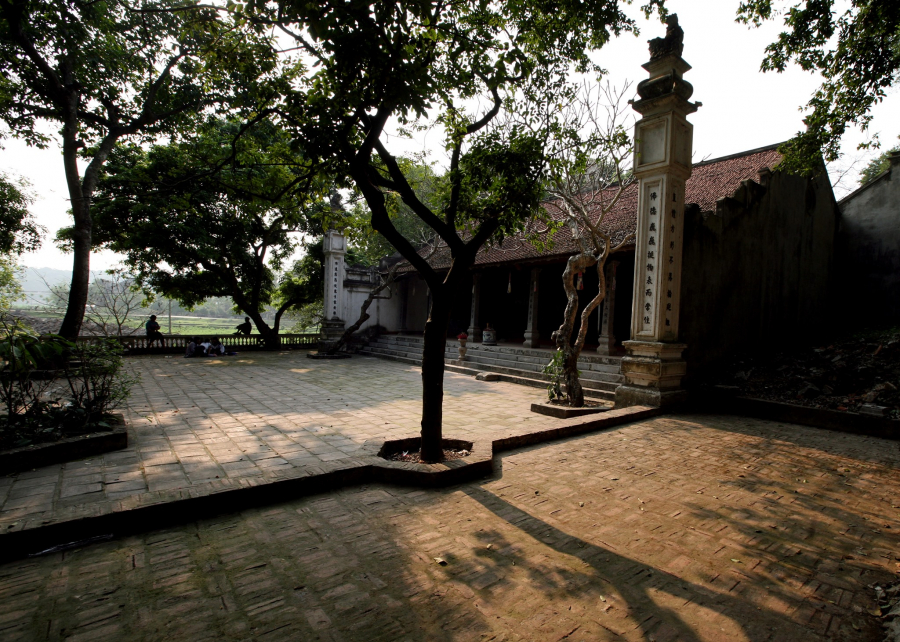
The peaceful, ancient space in Tram Pagoda. (Source: Le Bich)
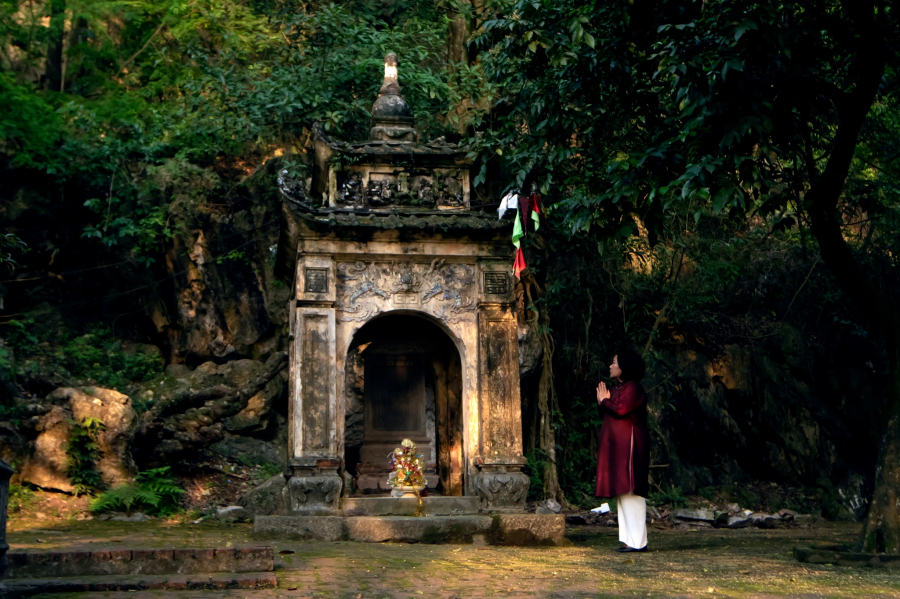
Small temple in front of the main hall. (Source: Le Bich)
According to legend, on the top of Tram mountain in ancient times, there was an agarwood tree that spread its fragrance throughout the area, so the mountain was called "Tu Tram Son". Later, that agarwood tree was cut down, but the name of the mountain was still kept. The entire Tram mountain area was where King Le and Lord Trinh once set up their temporary palace. On the mountain, there are many interesting caves such as Long Tien cave with hundreds of stalactites of strange shapes and many valuable relics such as the statue of Amitabha meditating on a lotus throne with a contemplative and kind face. On the ceiling and on the cliffs near the cave entrance, there are many inscriptions praising the beauty of Tram mountain by famous scholars of the late Le and early Nguyen dynasties.

The road to Long Tien cave on Tram mountain. (Source: Le Bich)

Stone statues of Buddha, fairies, guardians, steles,... in Long Tien cave. (Source: Le Bich)
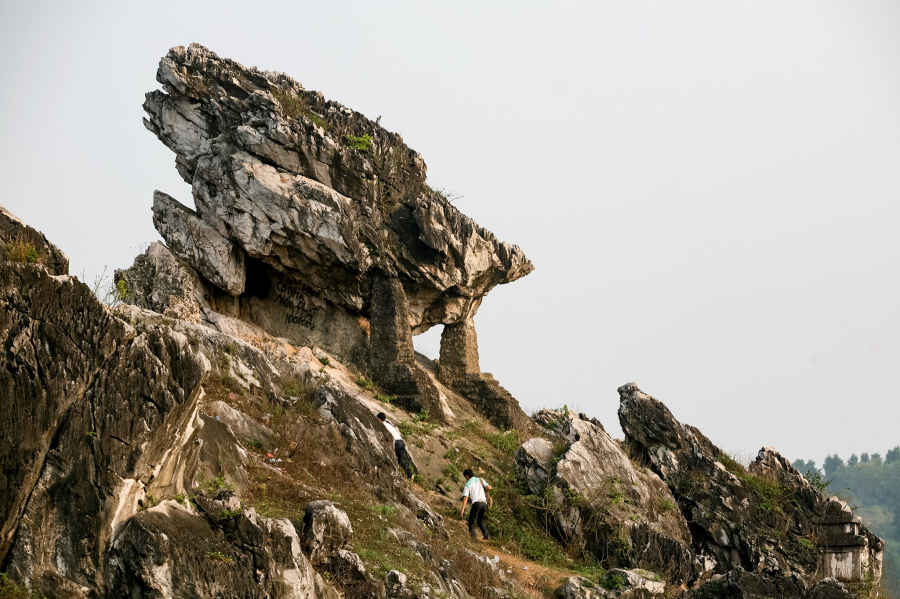
The top of Tram mountain. (Source: Le Bich)

Standing on the top of the mountain, you can see the peaceful countryside below. (Source: Le Bich)
Hundred-Room Pagoda
After a lunch break, photographer Le Bich continued on to Tram Gian Pagoda, about 3 km from Tram Pagoda in Tien Lu village, Tien Phuong commune, Chuong My district, Hanoi. The pagoda, also known as "Quang Nghiem Tu" or "Tien Lu Pagoda", was established during the reign of King Ly Cao Tong of the Ly Dynasty, the 10th year of Trinh Phu (1185).
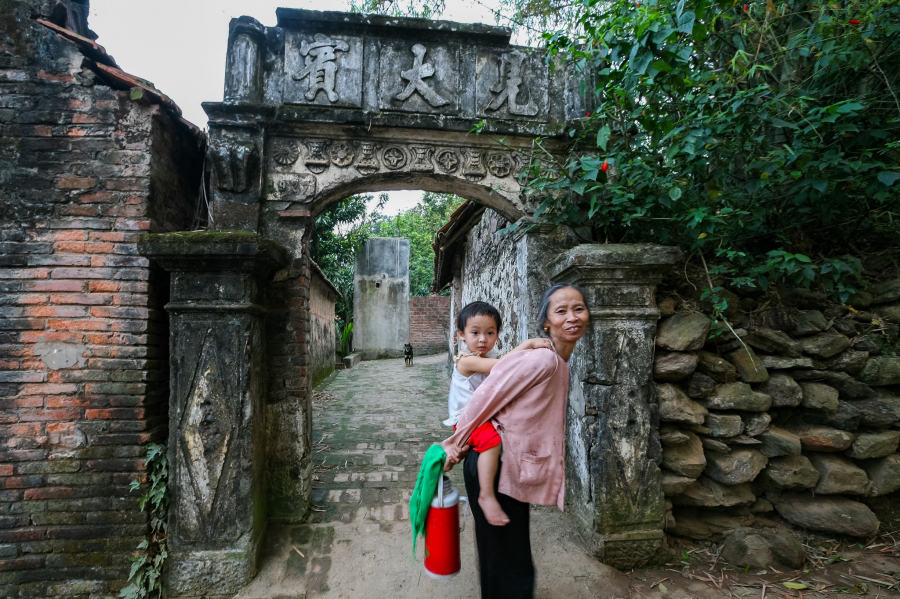
A small hamlet next to the Hundred-Room Pagoda. (Source: Le Bich)
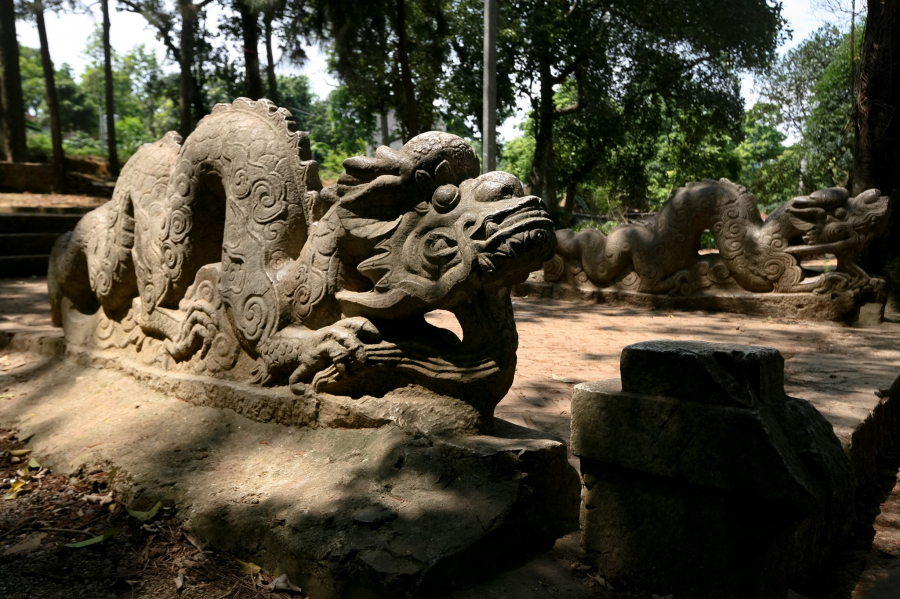
A pair of stone dragons on the way to Tram Gian Pagoda. (Source: Le Bich)
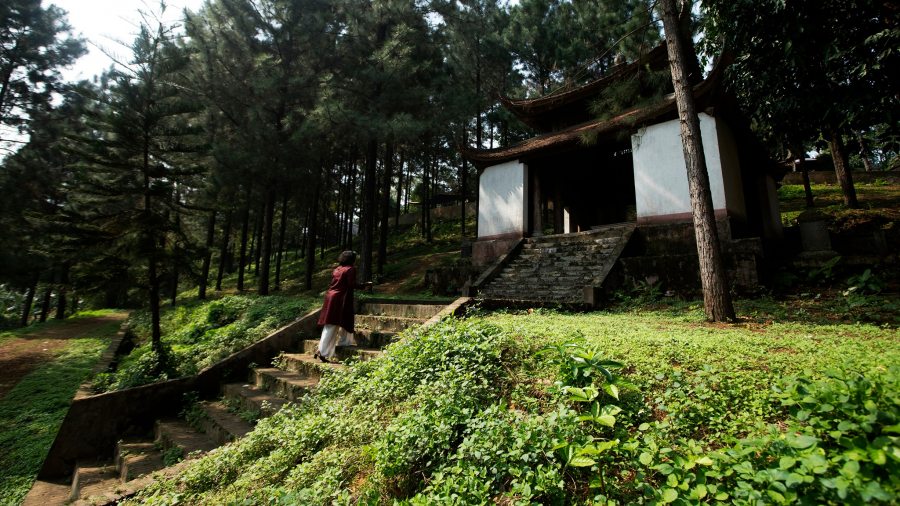
Entrance to the temple. (Source: Le Bich)
The Hundred-Room Pagoda is one of the national historical relics with great value in terms of history and architecture. The pagoda was built 9 centuries ago, so it preserves many relics such as steles, horizontal lacquered boards, parallel sentences, ... and more than 150 precious statues such as the Tuyet Son statue, the Bodhisattva Avalokitesvara statue. The architecture of the pagoda is highly appreciated with its unique design: counting the four corners of the pillars as a room, the pagoda has 104 rooms, divided into three main architectural clusters; the first cluster has four pillars and two stalls, is the place to play human chess during the festival and has a lotus pond where water puppetry is performed; the second cluster includes a two-story, eight-roofed bell tower and a railing surrounding the four sides, built during the reign of King Le Hy Tong (1693); the third cluster is the main pagoda including the worshiping house, the incense burning house and the upper hall.
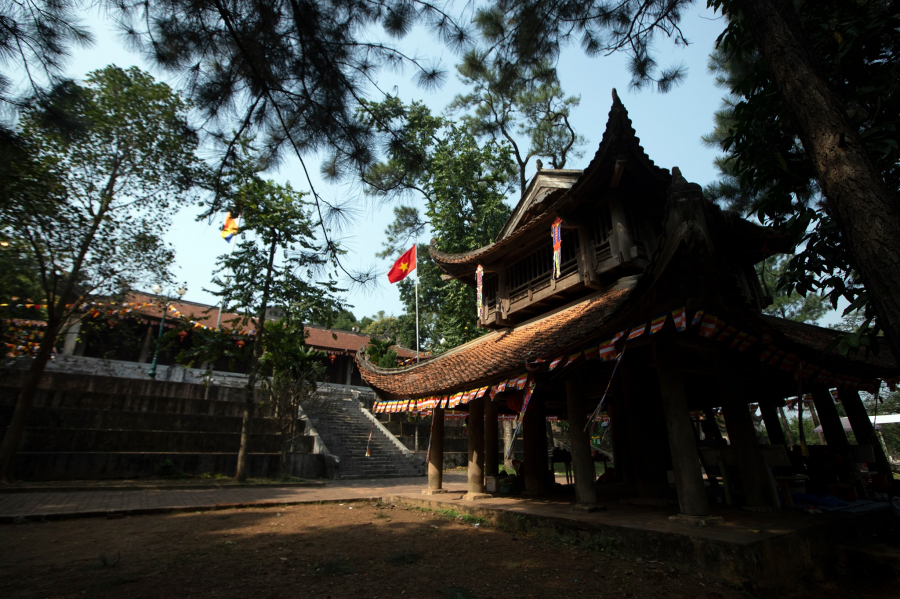
The bell tower built in 1693 of Tram Gian Pagoda is one of the few ancient bell towers remaining today. (Source: Le Bich)
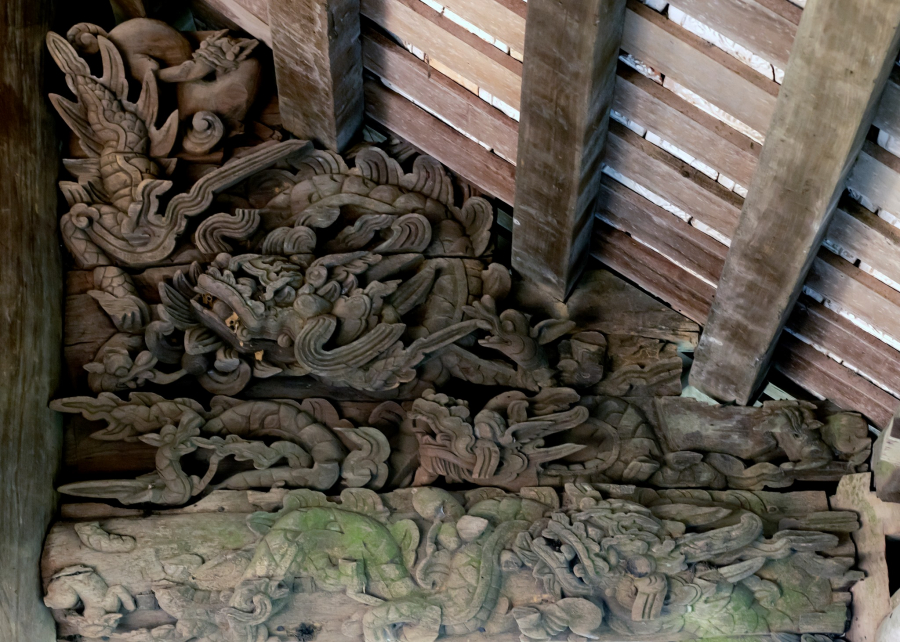
Dragon motif on the bell tower roof. (Source: Le Bich)
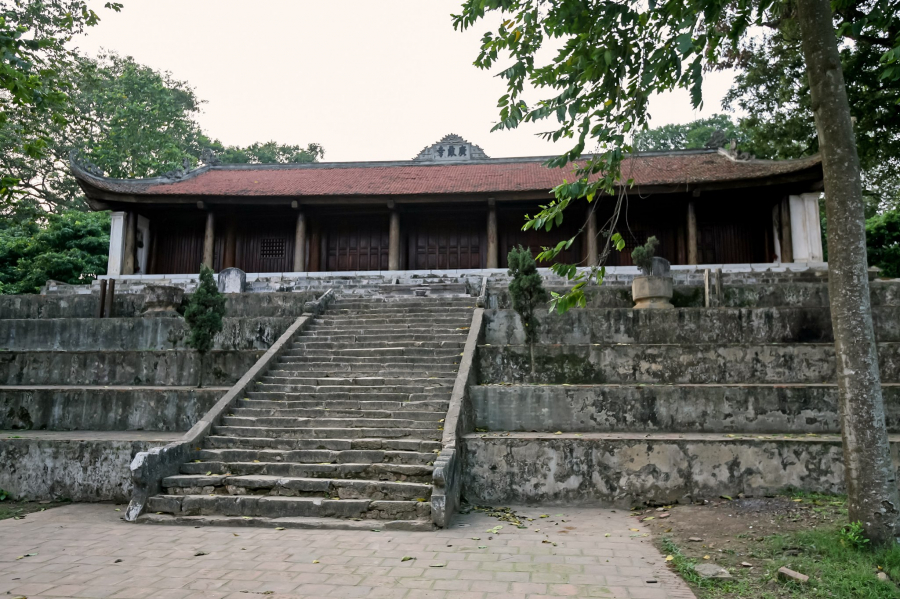
The upper courtyard of the temple has a rectangular stone platform with many elaborate patterns. (Source: Le Bich)
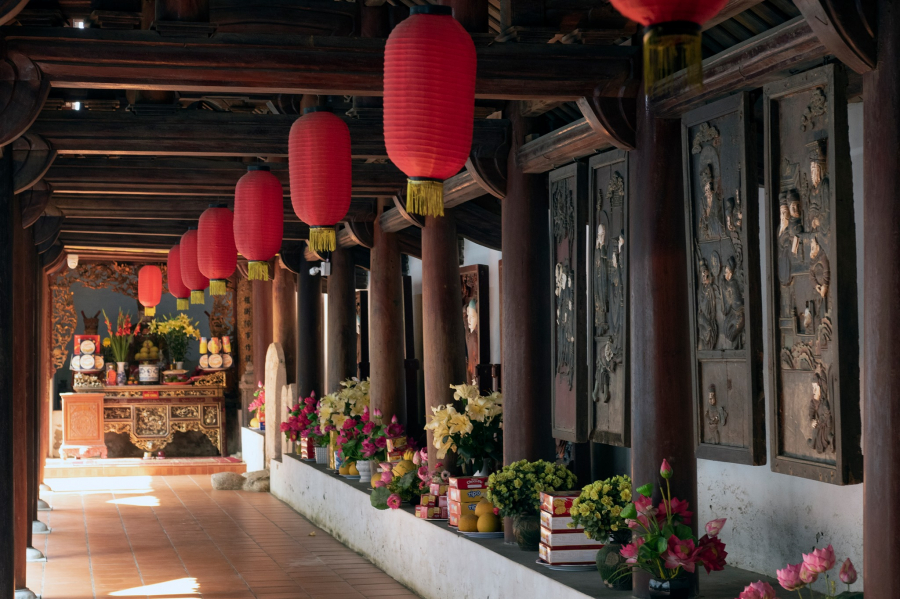
Inside the Hundred-Room Pagoda. (Source: Le Bich)




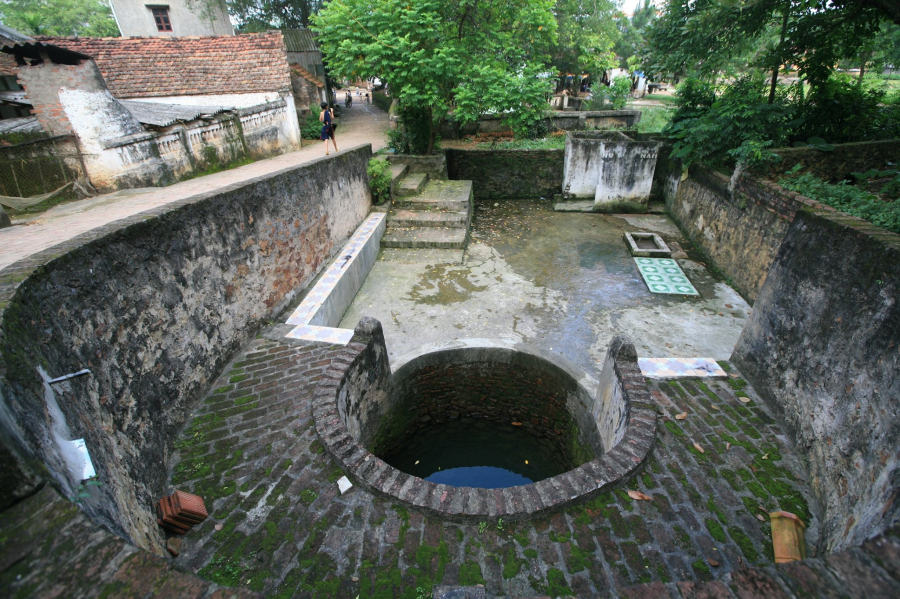
Ancient well next to Tram Gian Pagoda. There are many ancient wells around Tram Gian Pagoda and people here still get water from these wells for daily use. (Source: Le Bich)
A trip to visit the three ancient temples of Vo Vi Pagoda, Tram Pagoda and Tram Gian Pagoda is not expensive, especially for those who are living in Hanoi. If you do not have a car, you can completely drive a motorbike and go during the day, at any time you have free time. So save this destination so that when the stressful epidemic season is over, you can enjoy a peaceful, comfortable day at these ancient, solemn pagodas with rich historical and cultural values, as photographer Le Bich shared: "The tranquility of the pagodas and the quiet scenery will make your daily worries disappear. Before your eyes is the sparkling sunlight reflecting on the river, the frangipani trees blooming with white flowers falling in front of the pagoda yard... That feeling makes anyone who has come once remember forever".



























